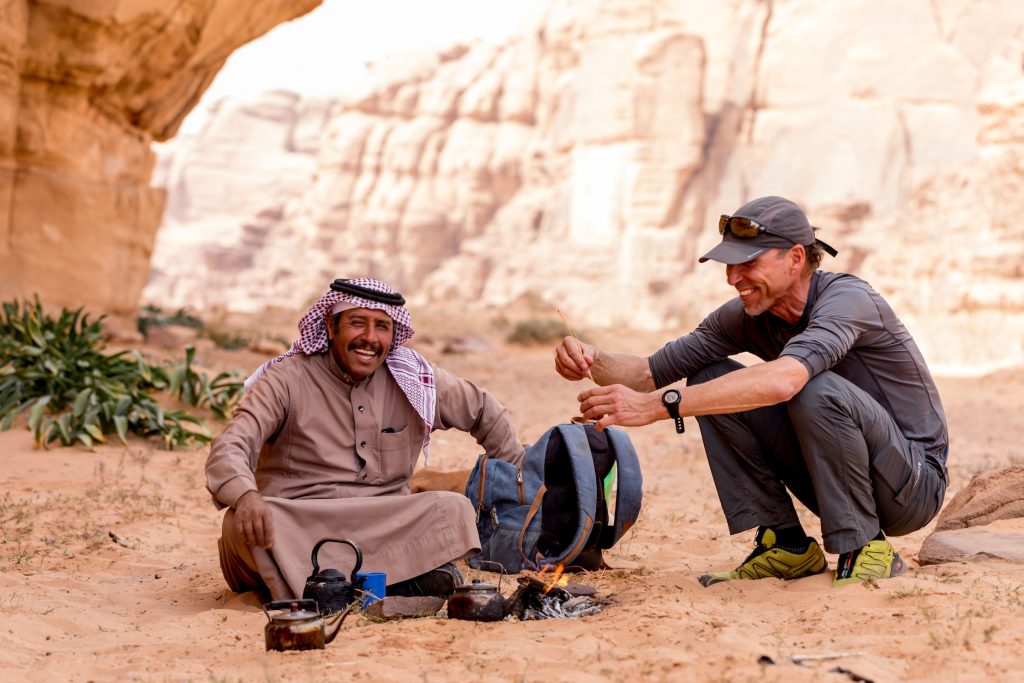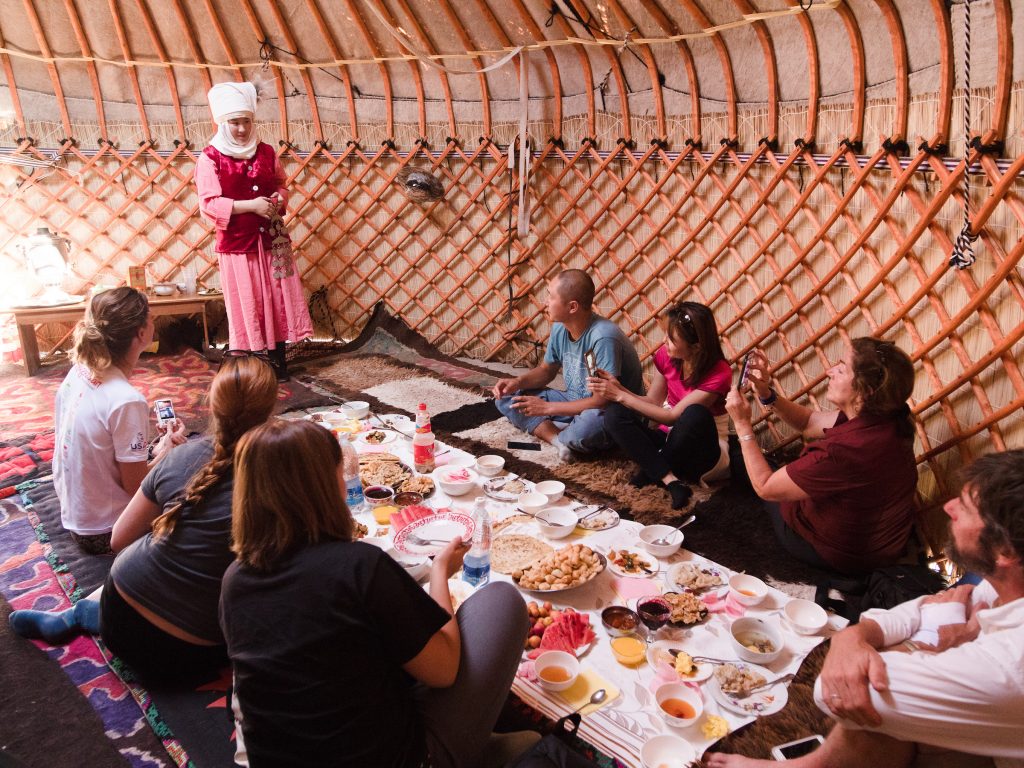The United Nations celebrates World Day for Cultural Diversity for Dialogue and Development on 21 May. Recognizing the importance of bridging the gap between cultures and deepening our understanding of the values of cultural diversity — especially in the context of travel and tourism — we’re excited to share this article about recognizing and appreciating cultural differences.
On my first reconnaissance trip to Peru, I hiked the Inca Trail with a well-respected local operator that prided itself in its social and sustainability practices. Our group of 14 hailed from the United States and Europe and bonded quickly over coca tea and snacks after strenuous days of trekking. Our local porters and guide would join us, practicing their English and teaching us words in Quechua. It was as if we were family after only a few short days.

The very last night before the long-anticipated sunrise hike to Machu Picchu, it was time to bid our porters a proper farewell. After dinner, our guide, José, led all of us guests into the meal tent where he told us a flat tip amount that the guides would expect and divide between themselves. Then he left for us to work it out.
An uncomfortable silence ensued. “I want to tip, but I don’t want to be told how much,” one guy commented. “Can we do it privately?” another asked. “This is awkward,” a girl said.
What happened? It’s not that the group didn’t want to tip, but the discomfort was palpable.
As travel industry professionals, we all have experience in international settings with partners from around the world. However, despite our many commonalities, we also have deeply ingrained cultural differences that — if ignored or not recognized — can create misunderstandings, miscommunication, and otherwise uncomfortable situations.
The story above is a classic example of two cultures colliding. In cultural theory, we often reference the iceberg: You see just the tip on the surface, but the mass lies underneath. We see behaviors and tendencies that are driven by societal norms, philosophy, and belief systems that run profoundly deep. One of the pioneers of cultural research is Geert Hofstede, whose work is internationally respected in academia, social science, and business. Hofstede’s cultural dimension models are based on data gathered worldwide to understand culture through the lens of economics, communication, and cooperation.
For this article, we’ll focus on four such dimensions often encountered in the adventure travel industry. Before we begin, it’s important to remember not to just talk about other cultures but stress the need to reflect on our own cultural orientation. We must consider our geography, upbringing, and beliefs so we can be dynamic and responsive to the many various cultures we will encounter in an ever increasingly globalized world.
Individualism vs Collectivism
What is it? In the example from Peru, we see individualism at work. On Hofstede's scale, Peru and the United States are about as wide apart as they come. Like much of Latin America, Peru is highly collectivist, meaning society is interdependent and defines itself in terms of “we” rather than “me.” Individualist societies, on the other hand, are largely self-reliant. When it comes to money, in a collectivist culture, one person’s salary may support much more than just the immediate family, whereas someone from a more individualistic society might see money as extremely private. What I experienced in Peru was the group-oriented perspective of the guides and porters clashing with the more private, individual orientation of the guests.
Where might you encounter it? Generally speaking, Latin America, Africa, and Asia are primarily collectivist regions while much of Europe, North America, and Western-oriented countries are more individualist. On a ground level, your guides, vendor partners, suppliers, and guests are where this cultural dimension is likely to come into play.
How to address it? For those coming from an individualist background, it’s important to recognize group thought and understand that decision-making is not autonomous. For those coming from a collectivist background, recognizing values such as independent thought and privacy is paramount.
In our small-group trips, I address individualism versus collectivism during one of our dinners. I invite the local guide to talk about related cultural values, such as the importance of family. Engaging conversations ensue and often lead to introspection and new perspectives. Regarding tipping, I supply an envelope for tips to be added at will. I then count the total at the end to make sure there’s enough before giving to the guide to distribute equally to the local team. This satisfies the needs of both cultures while preventing discomfort.
Direct vs Indirect Communication
What is it? American anthropologist Edward Hall as well as Dutch culturalist Fons Trompenaars explored the concept of high-context and low-context communication, or indirect versus direct communication. A U.S. American might take a “yes” at face value while missing high-context clues such as evasiveness that actually indicate “no.” Saving face, or not embarrassing oneself in front of a group, is another very common cultural value related to this dimension that is often encountered in intercultural situations.
Where might you encounter it? Germany is a classic example of low-context, direct communication where the emphasis is on words and clear speech to convey meaning. On the opposite end, Japan, China, or Brazil clue us in to the nuances of indirect communication through body language, eye contact (or not), and flowery speech where the delivery and contextual clues matter just as much or more than the words themselves.
How to address it? Like with every cultural dimension, first evaluate where you stand relative to the other party. Are you having a hard time getting a firm or quick answer from a vendor? It may be that he’s trying to say no without directly telling you so. Instead of asking, “Can you have the revised itinerary to me by Friday?” ask open-ended questions that will draw a more holistic response: “What do you need from me in order to finish this itinerary by the end of the week? Can you tell me the steps it will take to complete this task?”

Power Distance
What is it? Power distance is an important cultural dimension that comes into play in instances involving hierarchy, how authority is distributed, and the degree to which inequity is accepted in a given culture. In a high-power distance society, hierarchy is a given aspect of social structure where one’s place in society is accepted and further justification might not be needed. A subordinate is unlikely to challenge or even gain access to a higher-up whereas in a low-power distance context, decision-making and rank is much more egalitarian.
Where might you encounter it? Power distance can be found in a range of cultures and is often the highest in countries with a large gap between rich and poor. Formality, material possessions, and rank are all indicative of power distance. Do your business partners dress sharply and use formal titles? Are dinners hosted at a restaurant in a five-star hotel? Is there an emphasis on how old or established your partner’s company is? These are all indicative of a society with higher power distance.
How to address it. Power distance can be a tricky cultural conflict in adventure tourism particularly in developing and/or conservative regions. Many of us from progressive backgrounds look at fairness and equality as an ultimate truth, especially when it comes to women, gender, and society.
In Morocco, for example, there’s a power distance aspect between myself as a 30-something female and the often older males involved in the tourism industry. I have found the best way to quickly establish status in a way that results in respect is to have a Moroccan colleague introduce me. Rather than be offended and peg it all on gender inequality, I recognize the role that power distance has in this society and the value of referral to build cultural trust and break down barriers.
It can be easy for us to quickly judge a place or circumstance based on perceived inequity. With women in rural communities, for example, family may be a significant cultural value attached to identity as well as a source of pride, even if, from our perspective, having 10 kids is a financial and social disadvantage. The strategy here is to listen rather than judge, encourage rather than force, and know when to check your own perspectives. Also recognize that change, especially around conservative traditions and gender roles, does not happen overnight but rather over generations.
Rules vs Relationship Orientation
What is it? In rule-based societies, such as the United States, emphasis is placed on external rules that theoretically apply universally, such as fixed prices at the store or legal business contracts. Relationship-based societies rely much more on fluidity and context. Prices or contracts are determined based on the relationship, not some arbitrary external force. Rule-based societies often gravitate toward direct communication and relationship-based cultures are often more indirect.
Where might you encounter it? Relationship-oriented cultures often go hand-in-hand with places that have historic distrust of government through dictatorships, oppressive regimes, or general disorganization. If you can’t depend on the law to enforce business agreements, you have to trust your partners. Latin America, China, and much of the Middle East are great examples of relationship-oriented cultures where establishing a network and getting to know your counterparts is key to success.
Have you ever been lost in the dizzying medina of Fes, Morocco, and needed a local to guide you out of the labyrinth? This is relationship-based orientation in action and can be bewildering for a rule-based person accustomed to streets that can be navigated alone by clear signage and grid patterns.
How to address it? For contractually minded individuals that are more accustomed to binding agreements on paper, invest time in getting to know your partners. This may mean many cups of tea in Jordan, drawn out lunches chatting about football in Mexico, or karaoke outings in South Korea. Recognize that trust may take a long time but once your relationship with your partner is established, it is taken seriously and you will be well cared for. For a relationship-oriented culture dealing with a more rule-based partner, recognize that paperwork and contracts are important to their business process and be willing to look them over, ask questions, and have a dialogue about them.
Putting Cultural Competency to Work
Cultural psychology is a vast field of its own with a host of incredibly valuable resources. Hofstede’s Cultural Compass tool is a quick and easy way for travel professionals to compare countries across their different dimensions. These dimensions along with key cultural tips are easily referenced in the CultureMee app, a fantastic platform to help navigate cultures while on the road (and a great one to share with clients!).
Travel is the perfect opportunity for cultural education to bridge the gap of understanding among both internal teams and external partners. Host and guest, vendor and supplier, community and visitor all play a role in the dance of cultures.
As Henry Miller wisely said, “The destination is never a place, but a new way of seeing things.”
